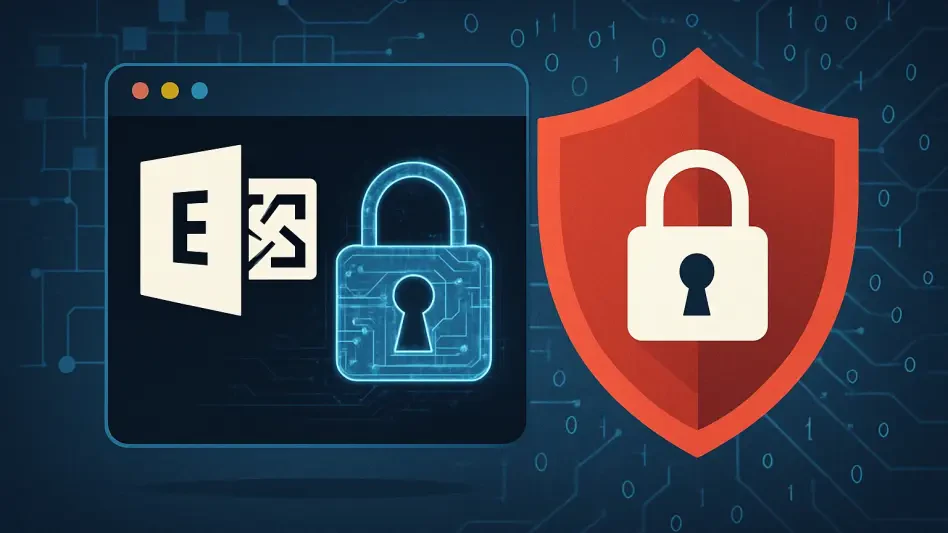In a world where digital communication underpins nearly every organization, what happens when the very system facilitating these exchanges becomes a prime target for cybercriminals? Microsoft Exchange servers, the backbone of email infrastructure for countless entities, are under relentless attack, with vulnerabilities exploited faster than many can patch them. A staggering statistic from recent cybersecurity reports reveals that over 60% of organizations using on-premises Exchange servers have faced attempted breaches in the past year alone. This alarming reality sets the stage for a critical response from leading cybersecurity authorities, highlighting an urgent need for action to safeguard vital systems.
The significance of this issue cannot be overstated. The U.S. Cybersecurity and Infrastructure Security Agency (CISA), alongside the National Security Agency (NSA) and international allies, has stepped in with a comprehensive guide to fortify Microsoft Exchange environments. This initiative, spurred by a high-severity flaw identified earlier in 2025, serves as a lifeline for organizations grappling with persistent cyber threats. It’s not merely a technical manual; it’s a strategic blueprint aimed at preventing catastrophic data breaches that could cripple operations or expose sensitive information on a global scale.
Why Microsoft Exchange Servers Face Relentless Threats
Microsoft Exchange servers are integral to organizational communication, handling billions of emails daily across government, corporate, and educational sectors. Their ubiquity, however, paints a massive target on their back, attracting state-sponsored hackers and ransomware groups alike. Cybersecurity data indicates that exploits targeting Exchange vulnerabilities often emerge within days of a flaw’s disclosure, leaving little room for delay in applying fixes.
The stakes are heightened by the complexity of hybrid configurations, where on-premises and cloud systems intersect, creating additional entry points for attackers. A notable vulnerability tracked as CVE-2025-53786, a post-authentication flaw exposed earlier this year, underscored how even authenticated users could be leveraged to compromise entire networks. Such incidents reveal why these servers remain a focal point for cyber adversaries seeking to disrupt or steal critical data.
Beyond technical flaws, human error and outdated systems amplify risks. Many organizations still operate unsupported versions of Exchange, despite Microsoft ending support for older editions. This lag in modernization, combined with inconsistent patching practices, creates a perfect storm for exploitation, necessitating immediate and robust defensive measures.
The Critical Timing of CISA’s Emergency Guidance
The urgency behind the latest security guidance stems from a series of escalating threats that have caught global attention in 2025. CISA’s emergency directive, issued earlier this year, mandated federal agencies to address the CVE-2025-53786 vulnerability by inventorying servers, applying patches, and disconnecting obsolete systems. This directive wasn’t a mere suggestion—it was a direct response to active exploitation attempts observed in real-time.
International collaboration amplifies the weight of this response, with agencies like the Australian Cyber Security Centre and the Canadian Centre for Cyber Security joining forces with CISA and NSA. Their collective message is clear: Microsoft Exchange environments are under constant siege and must be treated as if compromise is imminent. The end of support for legacy Exchange versions this year further compounds the need for swift migration to supported platforms like the Subscription Edition.
This guidance arrives at a pivotal moment when threat actors are racing to weaponize newly discovered flaws before organizations can react. Reports from cybersecurity firms note a sharp uptick in attacks targeting unpatched Exchange servers, with some breaches leading to ransomware deployments costing millions in recovery. The directive and subsequent guide serve as a stark reminder that inaction is no longer an option for any entity relying on these systems.
Inside the Comprehensive Security Guide for Exchange
The newly released guide for on-premises Microsoft Exchange servers offers a multi-faceted approach to defense, addressing vulnerabilities at every layer. It emphasizes maintaining a robust prevention posture through diligent updates, urging organizations to apply Microsoft’s biannual cumulative updates and monthly Patch Tuesday fixes without delay. Hotfixes for critical flaws must be deployed rapidly to stay ahead of exploit development.
Built-in protective tools form another cornerstone of the strategy. Microsoft’s Emergency Mitigation Service, which automatically blocks threats via URL rewrite rules, alongside Windows defenses like Microsoft Defender Antivirus, are highlighted as essential. The guide also advocates for Exchange’s anti-spam and anti-malware features to filter malicious content, reducing the risk of phishing and other email-based attacks.
Further recommendations focus on tightening access and enhancing security protocols. Administrative access to the Exchange Admin Center and remote PowerShell should be limited to dedicated workstations, supported by strict firewall rules. Authentication and encryption measures, such as enabling Transport Layer Security (TLS) and transitioning to Kerberos over NTLM, are critical to preventing adversary-in-the-middle attacks, ensuring that connections remain secure against sophisticated threats.
Expert Warnings Echo Through the Guidance
A powerful statement from the co-authored document by CISA, NSA, and international partners cuts through the noise: “Exchange environments are continuously targeted for compromise and should be considered under imminent threat.” This unequivocal warning reflects the combined expertise of global cybersecurity leaders who have witnessed firsthand the fallout from unpatched systems. Their insights draw from years of tracking relentless campaigns against Exchange infrastructure.
While the guide avoids delving into specific breach details, its emphasis on zero-trust principles—never assuming any user or system is inherently safe—mirrors lessons from past incidents. Historical cases, such as widespread ransomware attacks exploiting Exchange flaws, have shown how delayed responses can lead to devastating consequences, including data theft affecting millions of users. These real-world implications lend undeniable credibility to the call for urgent action.
The collaborative nature of this guidance underscores a unified front against cyber threats. By pooling knowledge from diverse agencies, the document not only addresses immediate risks but also sets a precedent for how global cooperation can tackle evolving challenges. This authoritative backing serves as a compelling motivator for organizations to prioritize the recommended safeguards without hesitation.
Practical Steps to Fortify Exchange Environments
Beyond warnings, the guidance provides a clear roadmap for organizations to shield their Microsoft Exchange setups from harm. Staying current with updates is paramount—scheduling regular checks for cumulative and security patches, and applying hotfixes within days of release, can close vulnerability windows before attackers strike. This proactive stance is non-negotiable in today’s fast-paced threat landscape.
Hardening systems involves activating built-in defenses and refining access controls. Ensuring tools like Microsoft’s Emergency Mitigation Service and Defender Antivirus are operational, alongside restricting Exchange Admin Center access to specific workstations, minimizes exposure. Additionally, enabling TLS, adopting Modern Authentication with multifactor authentication, and maintaining strict encryption standards like HTTP Strict Transport Security are vital steps to secure communications.
Detection and permission management round out the actionable advice. Configuring features to detect phishing attempts, such as P2 FROM header manipulation alerts, alongside segregating admin roles between Active Directory and Exchange, prevents a single breach from escalating. These measures align with zero-trust principles, building a resilient defense against both current exploits and emerging tactics that threaten organizational stability.
Reflecting on the rollout of this critical guidance in 2025, the cybersecurity community took a significant step toward fortifying digital infrastructure. The collaborative effort by CISA and global partners provided a lifeline to organizations under siege from relentless cyber threats. Looking back, the detailed roadmap offered actionable solutions that empowered entities to reduce their attack surfaces effectively. Moving forward, the emphasis remained on continuous vigilance—adopting zero-trust frameworks and staying ahead of evolving risks through timely updates and international cooperation proved essential. This unified response set a benchmark for tackling future challenges, ensuring that the protection of vital systems like Microsoft Exchange continued to adapt and strengthen over time.








